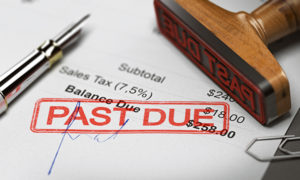When you think of the concept of quote-to-cash, there are many steps that go into the process and many areas for improvement. From the initial configuration and pricing to the contract creation and negotiation to sending the invoice, everything needs to move forward quickly and accurately.
Following our last blog on the quote-to-cash process discussing the ten steps that exist in the process and the role that integration plays in facilitating said process, we would today like to turn our attention to something that seems easy but doesn’t always progress as peacefully as you may think—getting paid.
Collections: Often Harder Than It Seems
In order to keep cash flowing through your organization, you need cash. While accounts receivable may go into your balance sheet, it still only counts as potential revenue until you have cash in hand. Knowing this, you offer your customers reasonably friendly payment terms, discounts to pay early, and more to close the sale.
However, there are often times where even after the due date, you still haven’t received compensation. Mistakes happen, and most of the time, it’s not out of malice or lack of funds, it’s just a lost invoice or bill. Getting your money is a priority, but your business is built on relationships and you don’t want to destroy one over a missed or late payment.
In fact, if treated effectively, the collections process can present an opportunity to develop a positive relationship that builds loyalty over time. If handled poorly, the collections process could affect your business both with short-term and lifetime customers.
Therefore, it’s important to know who owes you money and find the right balance to maintain your relationship while ultimately collecting money from your customers. Of course, this creates a few challenges:
 Keeping Track of Who is Delinquent
Keeping Track of Who is Delinquent
It’s easy for a late payment to get lost in the shuffle. Did the customer receive the invoice? How many days until an invoice is delinquent? Have you taken any actions to collect? Can you ensure that you delivered as promised?
Knowing all of this information before you get in contact with your customer is imperative to prevent the conversation from becoming a confrontation. Ideally, your ERP and CRM should be integrated, and your ERP should also provide a dashboard of open invoices so you can see exactly what you are owed and the actions you have taken.
A goal here is to not wait until a bill is seriously delinquent to contact a customer—making it extremely important to have a system of communication set up that makes reminding customers easy.
Contacting the Customer
If a payment is late, it’s important to know whether you’ve already emailed the customer or made a call. Again, customers may have simply forgotten or the invoice got lost. Annoying, yes. Enough to ruin your relationship? No. That said, how can you send an email that finds the perfect balance without sounding too confrontational?
Your collections process should consist of triggers and alerts for your staff and automated emails on important dates to remind customers.
Knowing When to Escalate
Of course, there is a time when you need to move from email to call and from call to next steps. Ideally, your goal here is to have every single collections activity tracked, creating a paper trail and reinforcing your communications. This will help you to avoid issues in which a customer may bring up a dispute on a severely delinquent invoice. The right solution will help you to escalate the dunning process strategically and prioritize communications.
The Solution: Collections Management for Acumatica
At Crestwood, we have developed a solution specifically for Acumatica to increase your company’s visibility into collections activities, streamline the collections process, and prioritize efforts to reduce costs.
Collections Management for Acumatica helps your business to close the gaps in the quote-to-cash process, allowing you to get paid faster, increase collections success rates, reduce the number of days with outstanding sales, and minimize the risk of bad debt write-offs.
This solution provides collections data at your fingertips including both open invoices by customer and activities by collector, drill down into specific details, and more.
Learn more about this intuitive product by clicking here or watching the video below.
